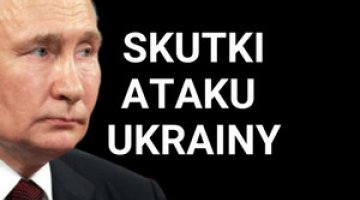The third winter at the front. Day 635 of the war

The heaviest recent fighting was seen around the Avdiivka area, where the Russians consistently sought to advance to the rear of the defending Ukrainian force. The Russian attacks concentrated on the Ukrainians’ northern wing, along the railway line between the coke-chemical complex and the ruins of the village of Stepove, but failed to produce significant results. The Ukrainian 47th Mechanised Brigade led an effective counterattack in the area. Meanwhile the Russians moved forward a few hundred metres in the industrial zone near the Yasynuvata-2 railway station, and thus overcame the last unconquered section of the fortifications at Avdiivka along the 2014 demarcation line. The battle for this town also involves the efforts both sides have been making to push back the enemy’s forces and resources to neighbouring sections of the frontline. According to Russian social media reports, Ukrainian troops attacked east of the village of Pivdenne towards Horlivka, crossing the 2014 demarcation line. For their part the Russians made small advances in and around Marinka.
Fighting continues along the lower reaches of the Dnieper, where Ukrainian naval infantry are holding a bridgehead in the village of Krynky. Their attempts to capture similar bridgeheads near the villages of Poyma and Pishchanivka have so far been unsuccessful. The Ukrainians have an advantage in artillery and drones in the area, which allows them to repel counterattacks by the numerically superior invading forces. The Russians are trying to offset this advantage through the intensive use of aerial guided bombs and thermobaric missiles launched from TOS-1A ‘Solntsepyok’ systems (one such launcher was destroyed near Krynky a few days ago).
The invading troops have taken the initiative south of Bakhmut, where they pushed the Ukrainians out of several positions near Klishchiivka. However, the key hills overlooking this village remain in the defenders’ hands. The Russians are also continuing to press the Ukrainian positions north of Bakhmut along the Khromove-Bohdanivka section, but so far without much success.
On the night of 17–18 November, the Russians attacked Ukraine with 38 Shahed 136/131 drones; the Ukrainian Air Force Command claims to have shot down 29 of them. The targets of the attacks were Kyiv city and Kyiv, Khmelnytskyi and Odesa oblasts. In the latter, power infrastructure was damaged, resulting in 2000 households being temporarily cut off from electricity. Attacks on central Ukraine also continued the following night, with Ukrainian anti-aircraft defences claiming to have shot down 15 of the 20 drones; meanwhile on the night of 20–21 November, the Russians used 10 drones (some of which reached the area of Kovel in Volyn oblast) and one Iskander-K missile, with only one drone reaching its target. In addition, the invaders used four S-300 missiles to strike ground targets in Donetsk oblast. According to a communiqué from the Donetsk Regional Prosecutor’s Office, one of the missiles hit a hospital in the town of Selydove, resulting in one death and eight injuries.
On 20 November, US Secretary of Defence Lloyd Austin visited Kyiv together with General Christopher Cavoli; they met President Volodymyr Zelensky and defence minister Rustem Umierov. According to Austin, they discussed the current operations the Ukrainian side is conducting, and the short and medium-term goals and objectives of their military operations. It was also announced that the 17th meeting of the Ukraine Defense Contact Group will be held later this week.
On the same day, the Pentagon unveiled details of a $100m military support package for Kyiv, to be sourced entirely from the US Army’s stockpile. This package will include one HIMARS system launcher with ammunition, Stinger mobile anti-aircraft missiles, 105-mm and 155-mm artillery ammunition, TOW and Javelin anti-tank guided missiles and AT-4 grenade launchers, more than 3 million rounds of small arms ammunition, demolition munitions for obstacle clearing, winter equipment and spare parts.
On 21 November, in a statement to the British newspaper The Sun, President Zelensky claimed that Russia was taking steps to remove him from office before the end of the year. Once again, he indicated that the Kremlin had prepared a plan for a destabilisation operation codenamed ‘Maidan 3’ to bring about a change of power in Ukraine using “all [possible] tools”. At the same time, Zelensky warned senior military officers not to get involved in politics as this threatens national unity. He stressed that “if a military man decides to get involved in politics, he has the right to do so, but he should not [then] be involved in conducting combat operations”.
On 19 November, President Zelensky dismissed Tetiana Ostashchenko from her position as head of the Medical Service of the Ukrainian Armed Forces. Her place was taken by Anatoly Kazmirchuk, formerly head of the Main Military Clinical Hospital in Kyiv. Defence minister Umierov justified the personnel reshuffle by saying that the time had come to rapidly improve the medical support for soldiers; this includes ensuring supplies of high-quality pharmaceuticals and medical equipment.
On 20 November, the Cabinet of Ministers of Ukraine dismissed the head of the State Special Communications Service, Yuriy Shchyhol, and his deputy for digital development, Viktor Zhor. Shortly after their resignation, the National Anti-Corruption Bureau reported that they were suspected of embezzling 62 million hryvnias (about $1.7 million) which had been earmarked for the purchase of computer equipment intended to launch a protected data registry.
On 18 November, the head of the press service of the government’s Prisoner of War Coordination Staff, Petro Yatsenko, indicated that the Russian side had ‘frozen’ negotiations on the exchange of POWs. The last such exchange took place in August, when 22 servicemen were returned to Ukraine. He added that the Russians had withdrawn from the exchanges to give the impression that they are not taking place because of the Ukrainian side’s reluctance; the Russian plan is to create discontent among the families of the Ukrainian prisoners.
On 18 November, deputy defence minister Yuriy Dzhyhir said it would be necessary to review the legitimacy of combat allowance payments to those fighting at the front. The soldiers’ complaints have been caused by manipulations in granting allowances to those who are serving only intermittently in the combat zone, or serving in the rear.
On 20 November, the Ukrainian defence ministry signed its second consecutive contract with an external company to handle military recruitment; Work.ua will provide its services free of charge. Deputy defence minister Natalia Kalmykova indicated that the armed forces are currently in need of civilian specialists such as drivers, mechanics, welders and construction workers.
On 20 November, the press service of the Ukrainian defence ministry reported that, as of October this year, there are more than 62,000 women serving in the Ukrainian Armed Forces, among whom 43,479 have the status of combatant, and more than 7000 hold the rank of officer. The communiqué stressed that there are no restrictions on female military personnel serving in the Ukrainian army: this applies to all positions, including combat positions.
On 18 November, Reuters reported that the Liberian-flagged bulk carrier Georgia S, which was carrying a cargo of wheat from the port of Pivdennyi (Odesa oblast), was damaged after hitting a mine.
Commentary
- There has been a significant deterioration in the weather across the entire frontline In recent days: frosts have started and over the weekend the first snow fell (up to 20 cm in Kharkiv oblast). This will adversely affect the soldiers’ living conditions as well as supplies to the front line. Logistics in the frontline zone are based on light wheeled transport, which is in a poor state of repair on both warring sides; currently it consists largely of civilian vehicles bought from soldiers and volunteers. The invaders are mostly using Russian UAZ vans (the so-called buchanki), while the Ukrainians have Western-made equipment (off-road vehicles and quads dominates). The problems of everyday life and supplies during winter will be compounded by growing fatigue and problems with the rotation and replenishment of the fighting troops, which both sides on the frontline are keenly aware of. The weather (especially strong winds and snowfall) will also limit the use of drones, and thus the intensity and accuracy of artillery fire.
- The Ukrainian offensive operations on the left bank of the Dnieper, which have been ongoing for over a month, are limited in scale. In the absence of a permanent crossing, the forces are moving across the river in small boats. Only a few infantry companies are operating in Krynky; it is more or less the same forces which have been attacking Poyma and Pishchanivka from a starting base near the destroyed railway bridge. The aim of the Ukrainians along this section is to cut the T2206 road leading from Nova Kakhovka to Oleshky (the leading Ukrainian positions are about 3–4 km from there). This is the only road parallel to the front line which is accessible to the Russian army’s Dnieper group. Due to the terrain on the left bank of the Dnieper (the vast area of the Oleshky Sands, some of which are an impassable semi-desert), if the Ukrainians reach the T2206 road, that will break the Russian grouping into two isolated parts and open up the option of developing offensive operations. The Ukrainians’ attacks have so far been unsuccessful; nevertheless, the road in question is under the fire control of their artillery, something which Russian so-called ‘milbloggers’ have confirmed.
- A growing problem for Kyiv is the depletion of US military aid funding, as the US Congress remains unable to pass a new package to fund comprehensive support for Ukraine. The ongoing impasse in Congress means that the Department of Defense does not know how long the remaining funds will last. According to the Pentagon the sum amounts to $4.8 billion, but only $1.1 billion remains to replenish the US stockpiles created by the transfer of arms and military equipment to Ukraine.
- Zelensky’s statement, in which he warned senior military officers not to get involved in politics, is a reaction to the popularity of Supreme Commander of the Armed Forces Valerii Zaluzhnyi, who may become his rival in a future battle for the presidency. It also demonstrates the head of state’s growing concern that he might lose the public’s confidence, especially among the soldiers, and be blamed for failures at the front. It cannot be ruled out that, in order to reduce the damage to his image, he will decide to dismiss some senior commanders and hold them responsible for the mishandling of combat operations.





